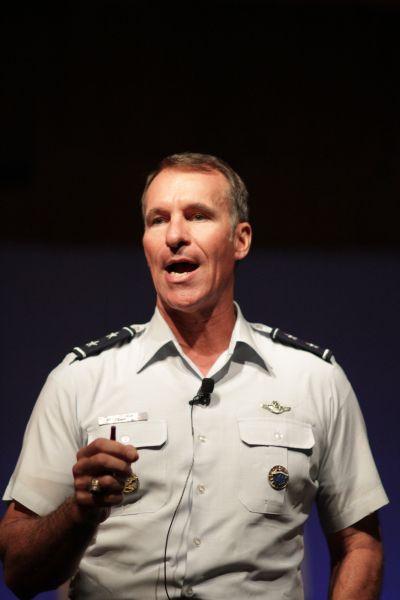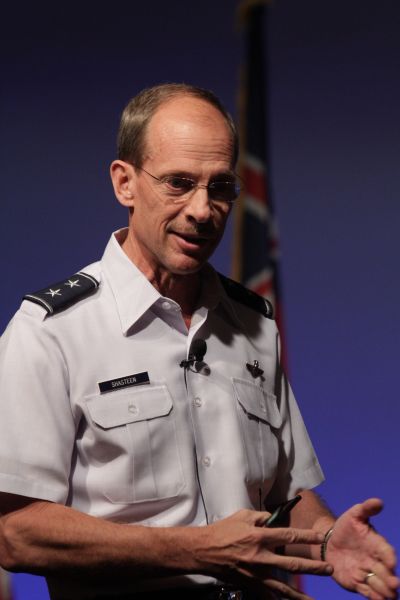A Regional Imbalance Confronts a Strategic Rebalance in the Pacific
The new strategic emphasis on the Asia-Pacific region poses a new set of challenges for the U.S. military, ranging from cyberspace attacks to missile defense in a large-scale conflict. Meeting these challenges will require a new approach to coalition building as well as a shift in technology procurement. And, the relationship among the United States, China and their neighbors will weigh heavily on all efforts for regional security.
Many of these points were discussed on the first day of TechNet Asia-Pacific 2012, being held in Honolulu, Hawaii, November 13-15. Titled “Rebalancing Toward the Asia-Pacific—Challenges and Opportunities,” the conference began with a direct focus on the key issues that define those challenges.
TechNet Asia Pacific Online Show Daily: Day 1
Quote of the Day: “If you try to protect everything, you protect nothing.”—Terry Halvorsen, Department of the Navy chief information officer
The new strategic emphasis on the Asia-Pacific region poses a new set of challenges for the U.S. military, ranging from cyberspace attacks to missile defense in a large-scale conflict. Meeting these challenges will require a new approach to coalition building as well as a shift in technology procurement. And, the relationship among the United States, China and their neighbors will weigh heavily on all efforts for regional security.
Many of these points were discussed on the first day of TechNet Asia-Pacific 2012, being held in Honolulu, Hawaii, November 13-15. Titled “Rebalancing Toward the Asia-Pacific—Challenges and Opportunities,” the conference began with a direct focus on the key issues that define those challenges.

Maj. Gen. Michael A. Keltz, USAF, director, strategic planning and policy (J-5), U.S. Pacific Command, discusses the changing geopolitical conditions in the Asia-Pacific region during TechNet Asia-Pacific 2012.
Among the opportunities discussed was the development of a new relationship with China. Maj. Gen. Michael A. Keltz, USAF, director, strategic planning and policy (J-5), U.S. Pacific Command (PACOM), said that a major shift in dealing with China began about four weeks ago. At the heart of this effort is convincing other nations in the region that they do not have to choose between the United States and China. However, that is proving to be a tough sell, he said, particularly because China is trying to force nations to choose between the two Pacific powers. The United States does have advantages, such as in training and equipment, that help it establish ties with other nations, the general offered.
Yet China continues to pose a security threat, particularly with its ballistic missile capability. Noting that PACOM has named this capability “the Death Star” based on its range outline, Gen. Keltz suggested that a "Star Wars" solution may be the key to defeating it. Instead of the beam weapons that characterized the movie, the analogy is to the way the cinematic Death Star was destroyed—from within. Gen. Keltz said that the United States might destroy China’s ballistic missile reach from close in, and he implied that Taiwan might be a good base from which to achieve that goal.

Maj. Gen. John Shasteen, USAF, mobilization assistant to the commander, U.S. Pacific Air Forces, discusses the need to defend against air and missile attack.
The need for integrated air and missile defense was emphasized by Maj. Gen. John Shasteen, USAF, mobilization assistant to the commander, U.S. Pacific Air Forces. Warning that all U.S. bases in the region will be under extreme threat, Gen. Shasteen offered that passive defenses should be incorporated. These measures might include hardening facilities and dispersing assets among other locations. The Pacific Air Forces are studying islands in the Marianas for potential dispersal sites, the general noted. In a conflict, some facilities will be destroyed or denied. The United States must ensure that assets can continue to fight, he stated.
Wherever U.S. forces are based, building coalitions is essential to their effective use in a crisis, whether humanitarian or warfighting. Gen. Keltz described how PACOM is transitioning from bilateral and even trilateral coalitions to multilateral groups. These larger coalitions would focus on regions in which the members would operate effectively. This regional approach would improve capabilities for all coalition members. In one example, Gen. Keltz predicted that Korea, Japan, Australia, New Zealand and the United States all may be able to conduct joint amphibious operations in a few years.
Maj. Gen. James T. Walton, USA, commanding general, 311th Signal Command (Theater), G-6, U.S. Army Pacific, warned that the United States must think about culture and doctrine with regard to interoperability with coalition partners. These nations might not match U.S. tactics, techniques and procedures. A U.S. solution might not be mapped as an overlay with other nations. Nor will the United States be in a position to invest in multiple bilateral networks, he warned.
These coalition operations need not involve warfighting. PACOM focuses much of its attention on humanitarian aid and disaster relief, Gen. Keltz stated. “We think about it 90 percent of the time,” he said, adding that the command is trying to convince area nations to implement architectures and authorities that would support U.S. activities to respond when disaster strikes.
Many of the challenges facing PACOM forces extend across the entire military, particularly with information technology and networking. Several defense chief information officers (CIOs) sounded off on the need for more capable systems that can extend the reach of U.S. forces securely and effectively.
Terry Halvorsen, Department of the Navy CIO, joined colleagues in a panel moderated by Defense Department CIO Teresa Takai in declaring that the traditional military specification (MILSPEC) approach to procuring information technologies must be abandoned in favor of commercial systems.
“We’re not fighting the cyberwar MILSPEC. We have to adapt to commercial spec,” Halvorsen stated. “The whole process today is too costly, too slow. We can’t afford the cyberwar without getting rid of MILSPEC and going commercial.”
Halvorsen also called for a new way of categorizing and protecting data. Calling data overprotection a threat to effective cyber operations, he said that the military should stop protecting data that is in the public domain anyway, especially that which is publicly available by law.
“If you try to protect everything, you protect nothing,” Halvorsen said, citing a statement by a German military official. Overprotecting data slows its delivery, and he called for establishing a definition of data value.
Complementing Halvorsen’s point was Brig. Gen. Kevin Nally, USMC, director of C4 for the Marine Corps. He called for prioritizing data and building enclaves around what is necessary to protect. The general added that forces must build a resiliency plan because it is not really possible to defend the Internet.
Coming up on the second day of TechNet Asia-Pacific 2012: A breakfast address by Marcus Sachs, vice president of national security policy at Verizon, and panel discussions focusing on industry and resources amid the strategic rebalancing.




Comments